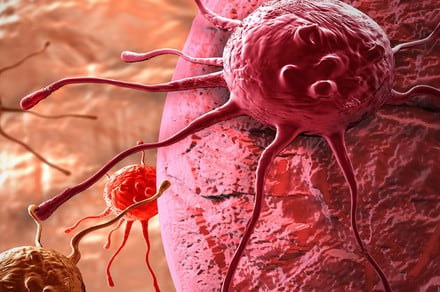Researchers from the University of North Carolina’s Lineberger Comprehensive Cancer Center and a consortium of other institutions have successfully mapped the genome of testicular cancer, the most commonly diagnosed cancer among men ages 15 to 44. The results could help physicians better determine future treatment options for the disease, as well as give patients information about the biomarkers to watch for if their cancer comes back.
Mapping the testicular cancer genome was carried out as part of the larger Cancer Genome Atlas Research Network, an initiative with the goal of comprehensively characterizing different types of cancer. For each cancer, a variety of sequencing techniques are used, including DNA, RNA and miRNA sequencing, along with other clinical data-gathering approaches. By studying the cancers in as much detail as possible, the researchers hope to better understand the relationships between these data types.
“Testicular germ cell cancers are highly curable; however, there is often extensive over-treatment or aggressive surgery,” Katherine Hoadley, assistant professor in the UNC School of Medicine Department of Genetics, told Digital Trends. “We identified miRNAs that are specific to different histology types. These represent a potential avenue for further research to develop minimally invasive serum markers to assess if the tumor has recurred, or to identify the likely histologic components which could help with treatment decisions.”
In the case of UNC’s testicular cancer mapping, researchers analyzed 137 testicular germ cell tumors to find unique molecular features. They discovered certain changes in the RAS gene family. These are the type of genes that make proteins involved in cell signaling pathways that control cell growth and death. Members of the RAS family include KRAS, HRAS, and NRAS, the most common oncogenes in human cancer.
“We identified distinct molecular events that were associated with different histological types of testicular germ cell cancer,” Hoadley said. “While we found recurrent mutations in KIT, KRAS, and NRAS, they were only discovered in a subset of seminomas. However, we noted strong epigenetic components — DNA methylation and miRNA — that are likely very important in testicular germ cell tumorigenesis. We also identified a previously underappreciated subset of seminomas defined by KIT mutations that likely occur early. These tumors had a complete global lack of DNA methylation that locks them in a state with similarity to primordial germ cells.”
Hopefully, this turns out to be yet another piece in the puzzle on the road to curing cancer once and for all. While we’re still a long way from that, mapping the genome of existing cancers will give scientists far more information about exactly what it is that they’re up against.
Editors’ Recommendations
- An artificial beauty spot could warn you of cancer before symptoms emerge
- Doctors successfully perform the world’s first robot-assisted spinal surgery
- John Bain, better known to gamers as TotalBiscuit, dies at 33
- Atari co-founder and video game pioneer ‘Ted’ Dabney dies at 81
- A.I. detects skin cancer better than dermatologists in international study

